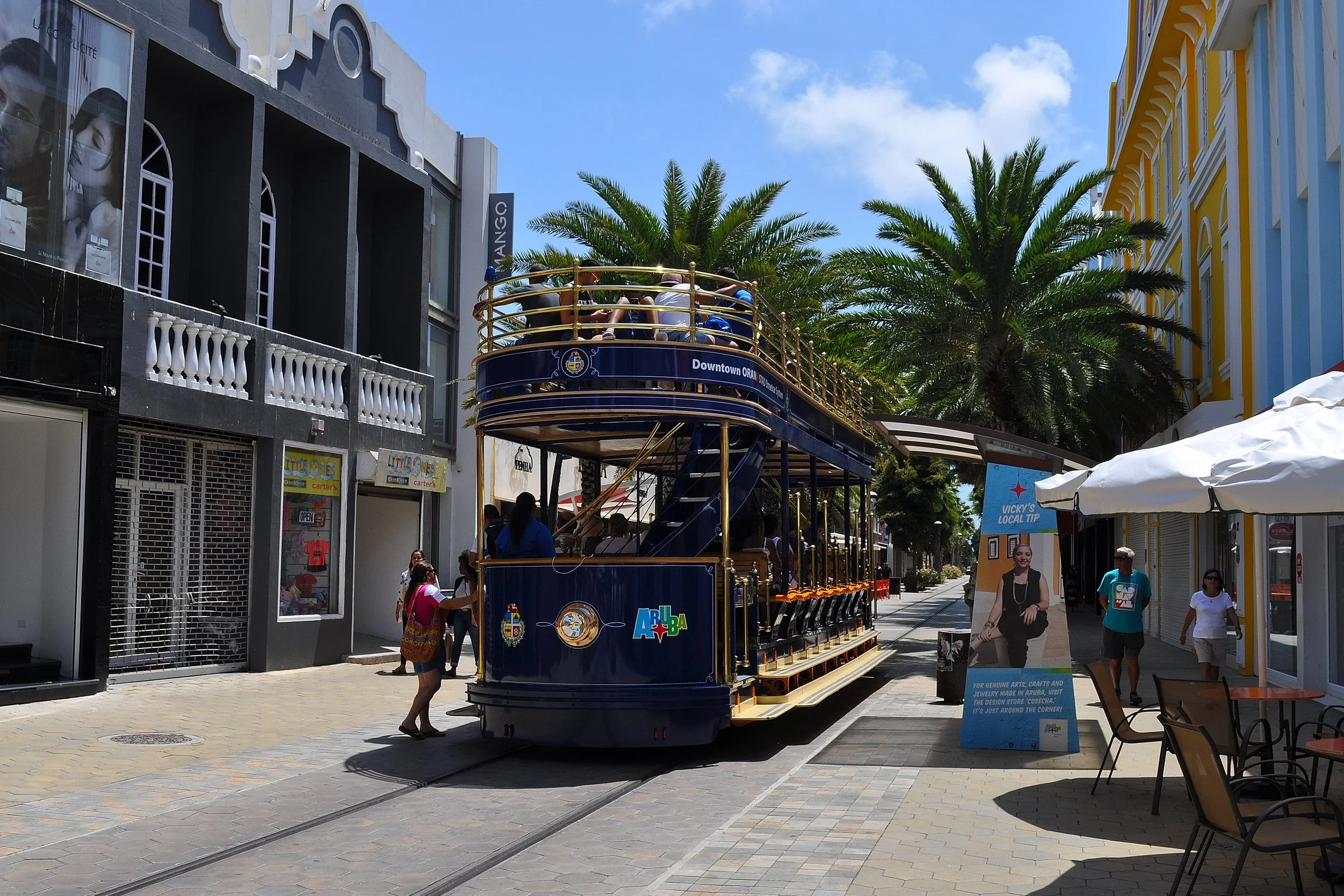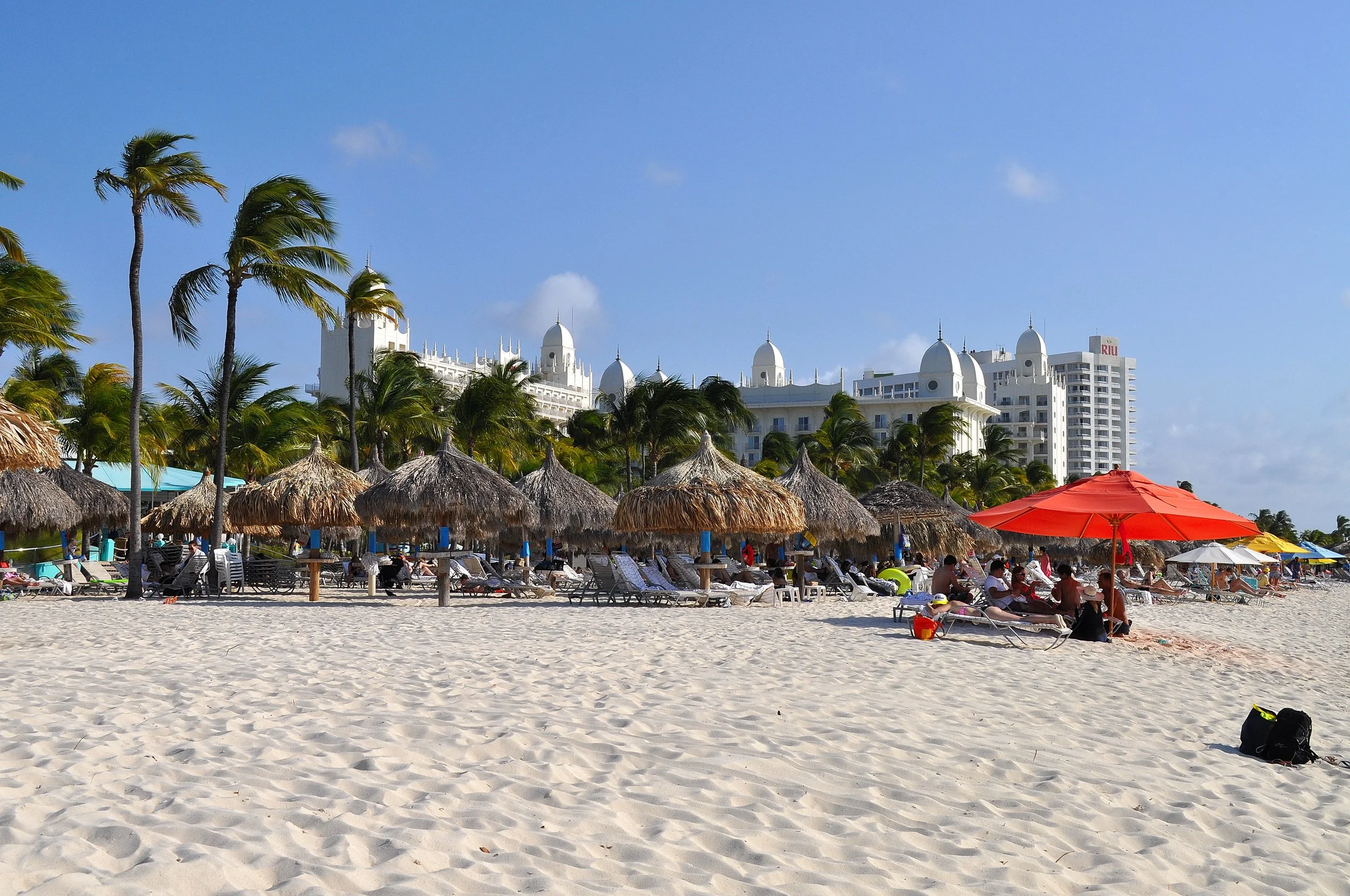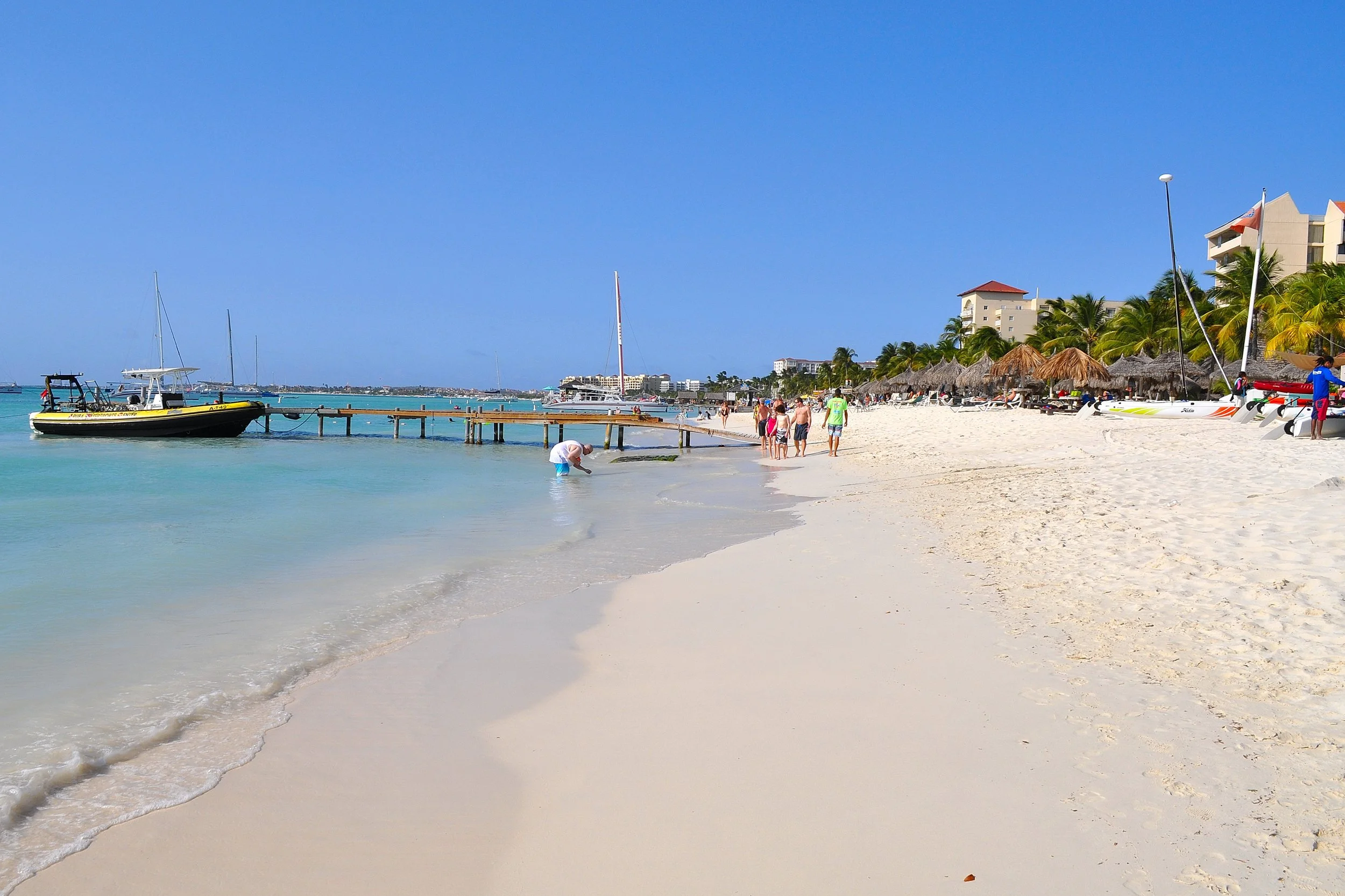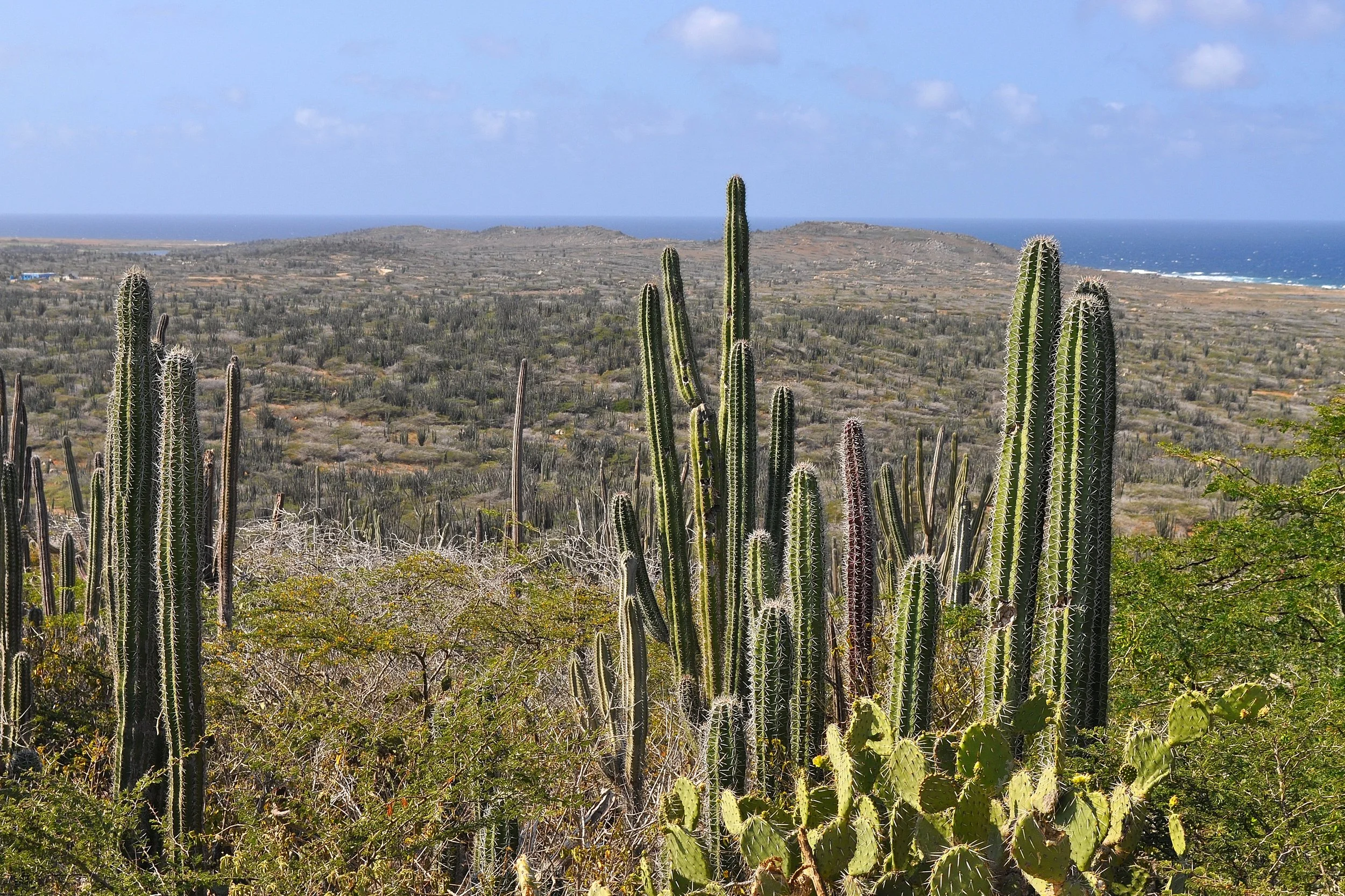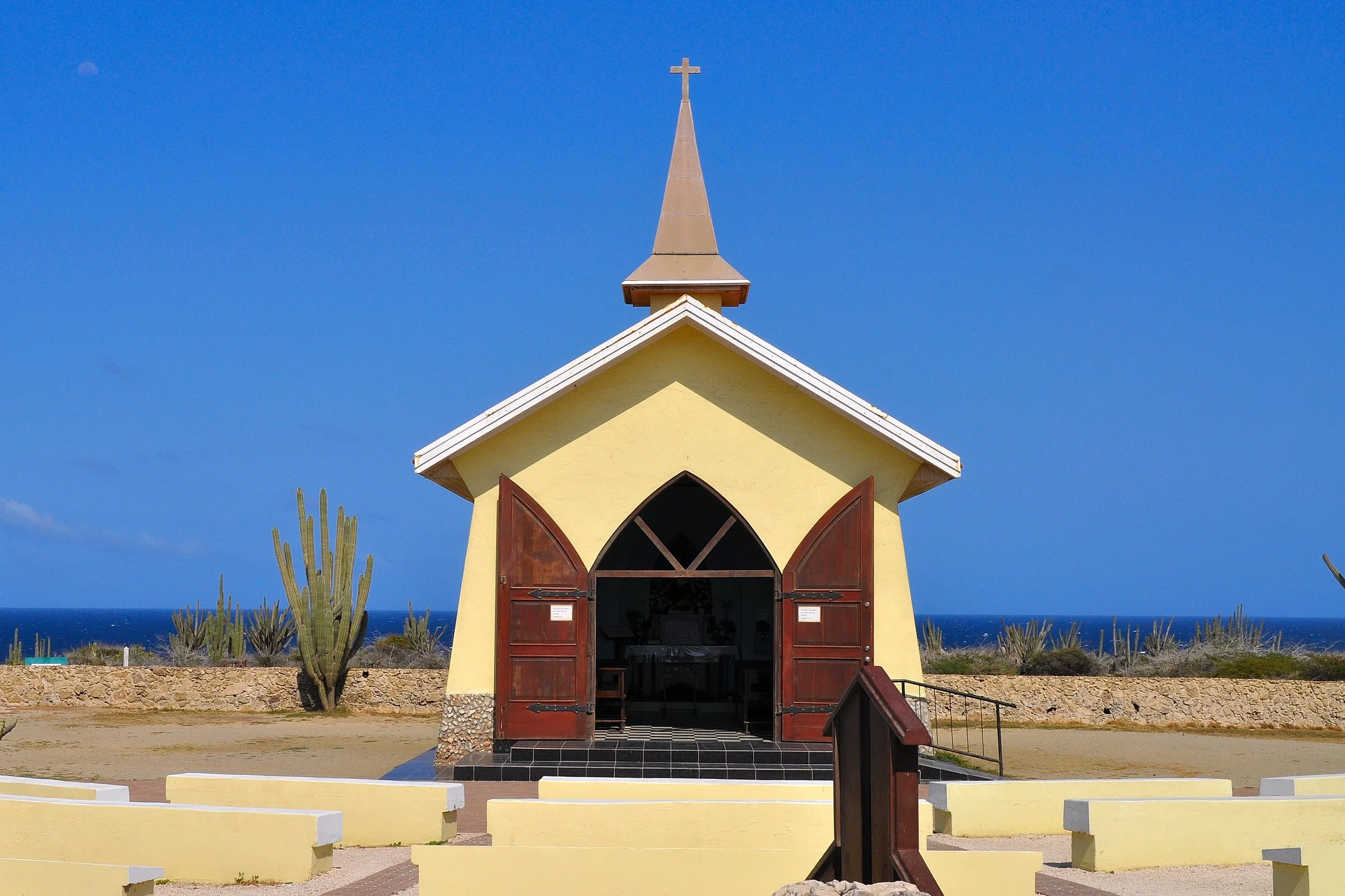Aruba: one happy island
Angela: as the ship docks at the port of Oranjestad, we are immediately greeted by an explosion of colors: pink façades, lemon yellow, pastel blue. The houses look like they came from a Dutch neighborhood, yet are bathed in the dazzling light of the Caribbean.
Piero: the island of Aruba is the smallest of the three sisters, yet also the liveliest and most cosmopolitan. It lies just 25 kilometers from the coast of Venezuela, yet it is part of the Kingdom of the Netherlands. This combination can be felt everywhere: in the language, the flavors, the faces.
Angela: its history runs deep. The first inhabitants were the Caquetío, a branch of the Arawak people, who lived off fishing and agriculture. When the Spanish explorer Alonso de Ojeda arrived in 1499, the island came under Spanish rule. But with no gold or plantations, it was soon called “Isla Inútil”.
Piero: despite this harsh judgment, Aruba found its destiny. By the mid-17th century, the Dutch arrived, making it a strategic base and a stopover for trade routes. In the following centuries, its geographic position proved valuable: close to South America but politically stable, a safe harbor in the heart of the Caribbean.
Angela: the 20th century brought a turning point. The Americans built an oil refinery to process Venezuelan crude, and Oranjestad became a small industrial center. But from the 1980s, Aruba changed again, focusing entirely on tourism. Today it is one of the world’s most beloved destinations, with perfect weather and dreamlike beaches.
Piero: we begin our day at one of these beaches: Eagle Beach, one of the most beautiful in the Caribbean, with powdery white sand and turquoise waters fading into countless shades. The divi-divi trees, bent by the constant wind, are the island’s symbol and seem to point the way to a smile.
Angela: the wind is a constant presence. It blows here all year round, but it’s gentle and fresh. It’s what makes Aruba perfect for windsurfing and kitesurfing, but also for those who just want to stroll with their feet in the water without feeling the oppressive heat.
Piero: we continue toward Palm Beach, the island’s most lively area, where resorts, restaurants, and small bars line the sand. It’s the perfect spot for those seeking some life and Caribbean music, but just a few kilometers away, you can rediscover the wild nature of Arikok National Park.
Angela: Arikok covers almost a fifth of the island and holds an unexpected landscape: volcanic rocks, giant cacti, and ancient caves with Arawak rock paintings, like Fontein Cave. Here you understand how Aruba differs from many other Caribbean islands: drier, rougher, yet more authentic.
Piero: inside the park, there are also natural pools like Conchi, nestled among lava rocks and reachable only by off-road vehicle. The water is clear and calm, protected from the ocean waves breaking just outside. It’s one of those places where time truly stands still.
Angela: just outside the park, we stop at the Ayo rock formations, a magical place that seems straight out of a geological tale. Huge diorite boulders, smoothed by wind and time, rise in the desert like natural sculptures. Some weigh tens of tons and balance perfectly on one another, creating arches and mysterious passageways.
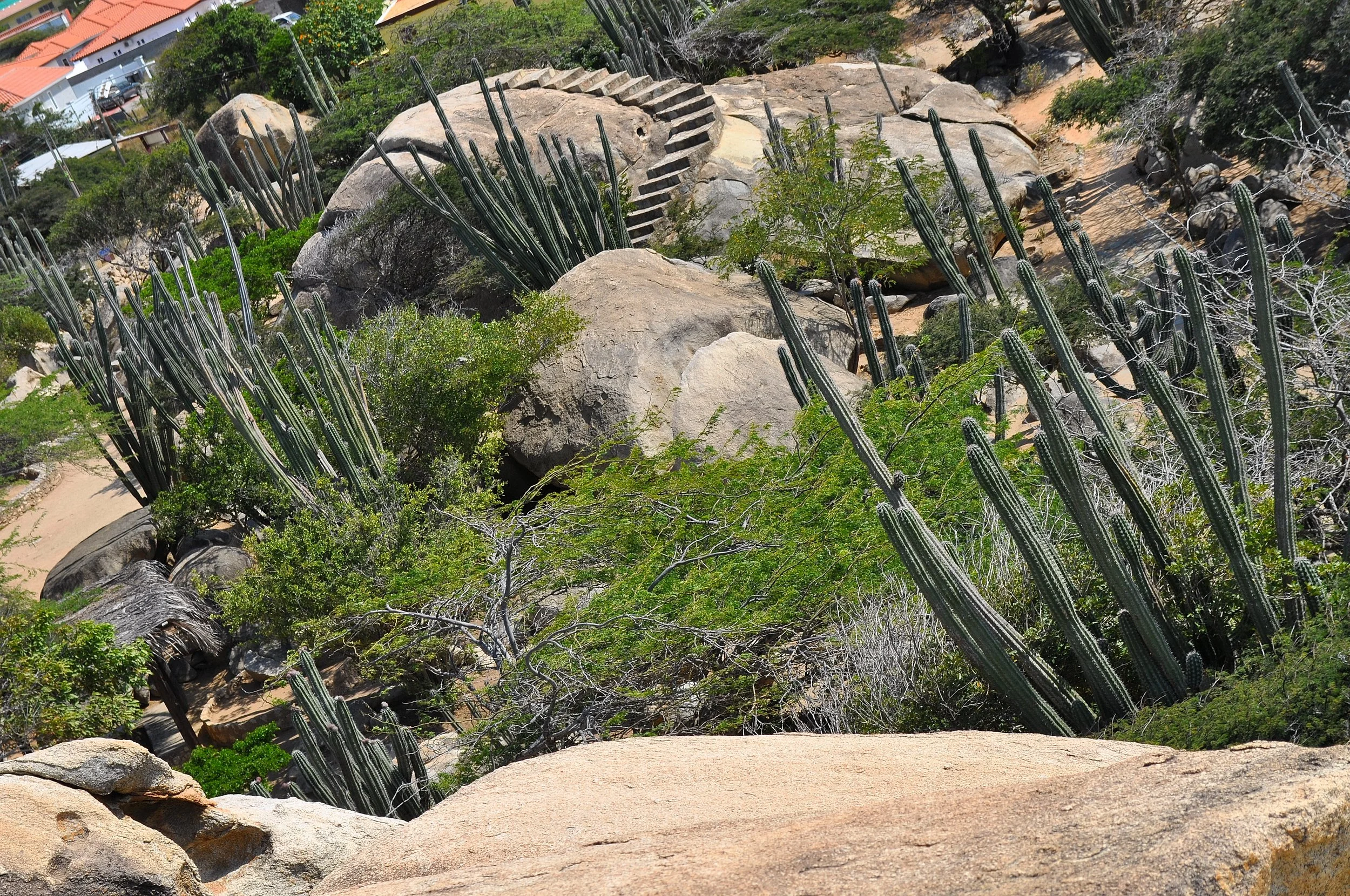


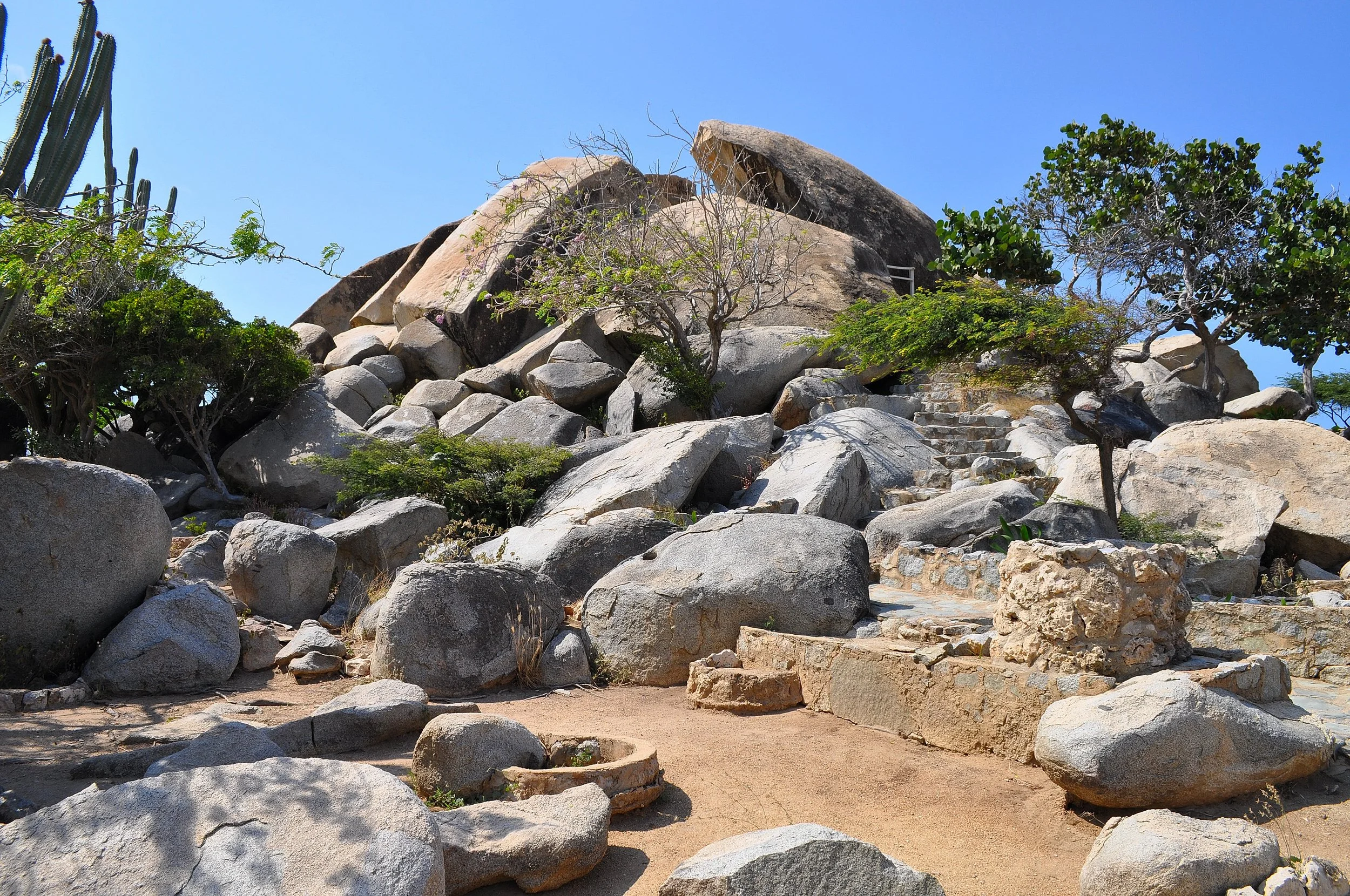





Piero: the ancient Arawak considered this site sacred: on the rocks, engravings and pictograms still remain today, testifying to rituals and ceremonies connected to nature and the sky. Walking among these silent boulders, surrounded by cacti and sunbathing lizards, gives a profound sense of peace.
Angela: we then head north to the California Lighthouse, built in 1910. From here, the view spans the entire island: the endless sea to the west and the arid hills to the east, with wind turbines turning slowly in the breeze.
Piero: not far away is the Alto Vista Chapel, built in 1750, the island’s first Catholic place of worship. It’s tiny, painted yellow, and surrounded by a desert of stones and cacti: a symbol of faith and resilience that reflects the simple spirituality of the Aruban people.
Angela: we spend the afternoon by the sea once again, this time at Baby Beach, a cove perfect for snorkeling, with shallow, calm waters that reflect the sky. Fish swim just inches from the shore, and time seems to stand still.
Piero: Aruba is “One Happy Island”, as its official motto says. But behind that smile lies a history of blending cultures, resilience, and openness to the world.
Angela: as the ship sets sail and the lights of Oranjestad fade, the island remains etched in our memory like a warm, luminous embrace. The wind continues to blow even when you can’t feel it, as if to say that here, happiness truly is in the air.

